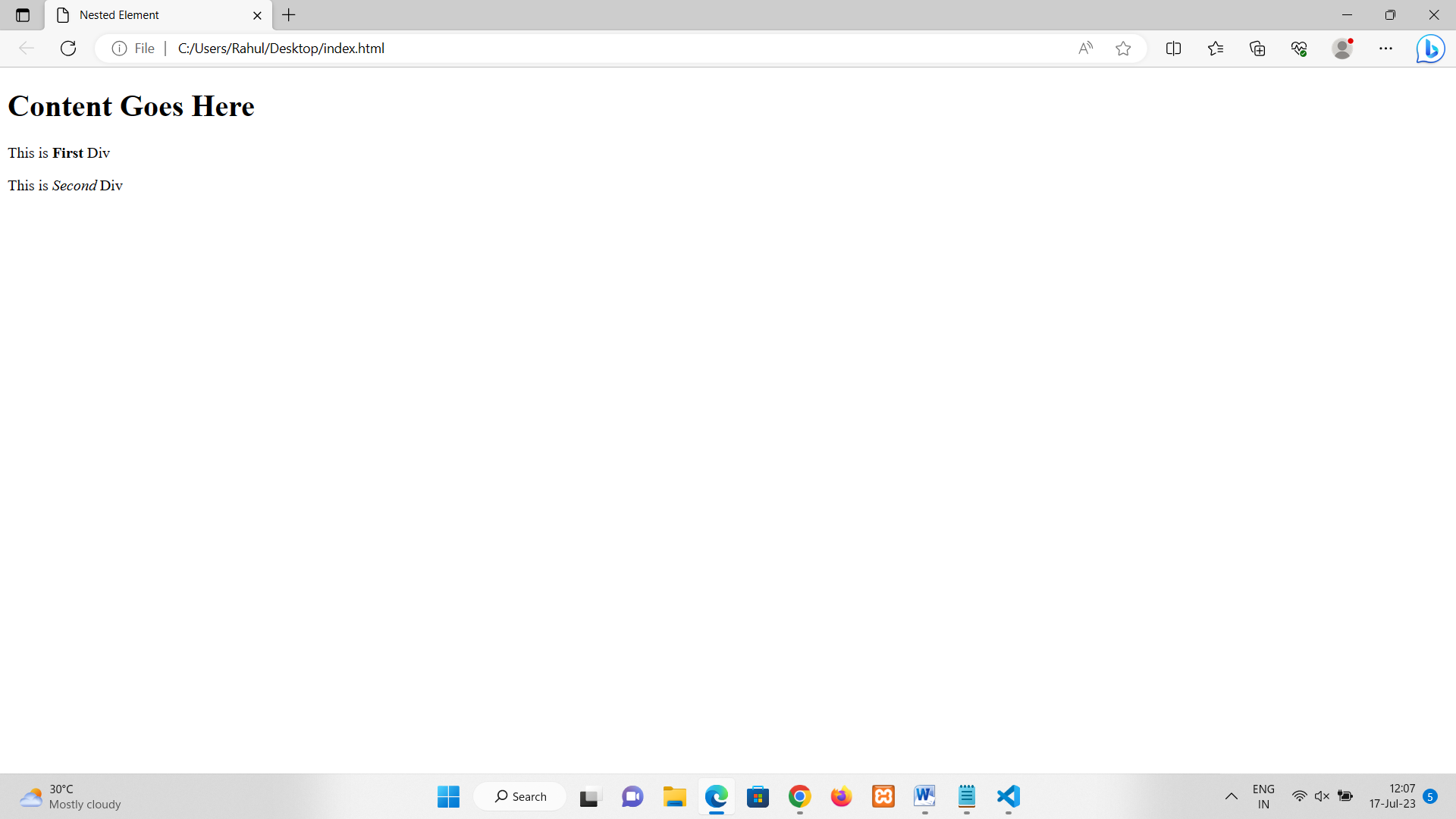• Nested HTML elements refer to the practice of placing one HTML element inside another element.
• It involves enclosing one element within the opening and closing tags of another element.
• This nesting allows for the creation of a hierarchical structure in HTML documents.
• For example, you can nest a <strong> element (for bold text) within a <p> element (for paragraphs) like this: <p>This is a <strong>bold</strong> statement. </p>.
• The nested element inherits the properties and behaviours of its parent element.
• You can nest elements multiple times, creating complex structures and layouts.
• Properly closing the nested elements is essential to maintain the validity of the HTML structure.
• Nesting is commonly used to organize and structure content, apply styling, or group related elements.
• It is important to follow the correct nesting rules to ensure the HTML code is valid and well-formed.
• The use of indentation can help improve readability and understanding of nested HTML elements.

